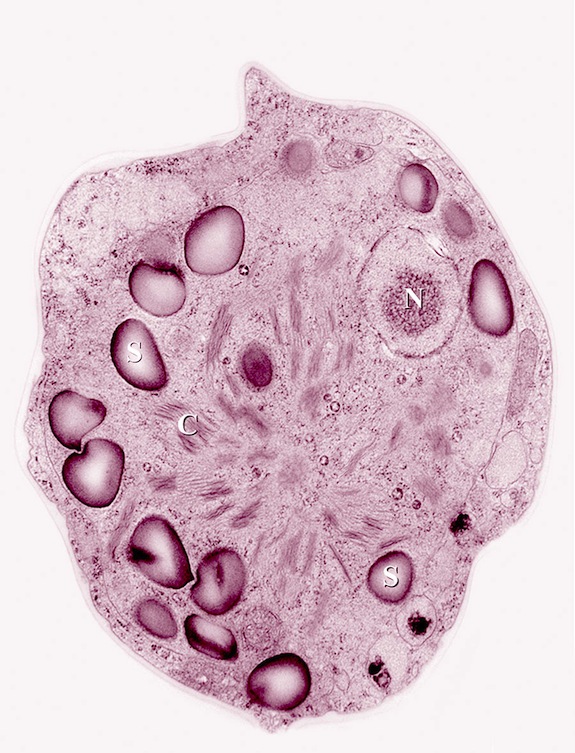This Pink Snow Is Not What You Think it Is
This phenomenon is commonly known as watermelon snow, red snow or blood snow
You know you’re not supposed to eat the yellow snow, but what about this pink stuff?

Image: Will Beback
At Scientific American, Jennifer Frazer tells of stumbling upon pink snow in Colorado a few years ago. But she’s far from the first person to find this curious pink stuff in the powder. Captain John Ross’s 1818 expedition through the Northwest Passage also found pink snow and thought it was iron-nickel meteorite detritus. His weird discovery even made the London Times:
Sir John Ross did not see any red snow fall; but he saw large tracts overspread with it. The colour of the fields of snow was not uniform; but, on the contrary, there were patches or streaks more or less red, and of various depths of tint. The liquor, or dissolved snow, is of so dark a red as to resemble red port wine.
But it wasn’t iron-nickel meteorite. It was actually an algae. Frazer explains:
If there’s one thing Earth has taught us, it’s that if a surface or substrate is ever wet, something will grow. And, despite near-zero temperatures, acidity, solar irradiation, and what must be frankly admitted to be minimal nutritional value, snow is no exception. Over 60 species of algae alone dwell there, and no doubt more await discovery. Scientists just announced this May the discovery of a new species from Colorado snow that they suggest could be a source of biofuel feedstock for northern climates where other algae cannot thrive.
This algae in particular, named Chlamydormonas nivalis, is actually the most common of the snow alga, Frazer writes. Frazer explains in her post how it moves about in the snow and why it’s red.
The phenomenon is commonly known as watermelon snow, red snow or blood snow. The nickname “watermelon snow” comes not only from the pink color, but it is said to smell slightly sweet, a bit like watermelon. Walking on this pink snow can stain your boots. Wayne’s World, an online textbook of natural history, writes that to really understand and appreciate the algae, you have to see it up close:
Through a microscope a drop of melted snow contains literally thousands of brilliant red cells of Chlamydomonas nivalis that resemble globular hard candies. Critical focusing reveals a thickened wall with a warty or minutely bumpy ornamentation.
Here’s what the little cells look like up close:

Image: USDA
But can you eat it? SummitPost.org says that you probably can, but might not want to:
In general, most algae is considered edible. Even the faint watermelon-like scent of snow algae might give that impression. The author of this SummitPost article has even tasted very small doses of snow algae, for testing purposes, without feeling sick. However, it is possible that snow algae might be contaminated by bacteria and toxic algae that are harmful to humans. Eating large quantities of watermelon snow has been known to cause digestive ailments, although the tolerance level of each person’s digestive system might be different.
More from Smithsonian.com:
/https://tf-cmsv2-smithsonianmag-media.s3.amazonaws.com/accounts/headshot/Rose-Eveleth-240.jpg)
/https://tf-cmsv2-smithsonianmag-media.s3.amazonaws.com/accounts/headshot/Rose-Eveleth-240.jpg)